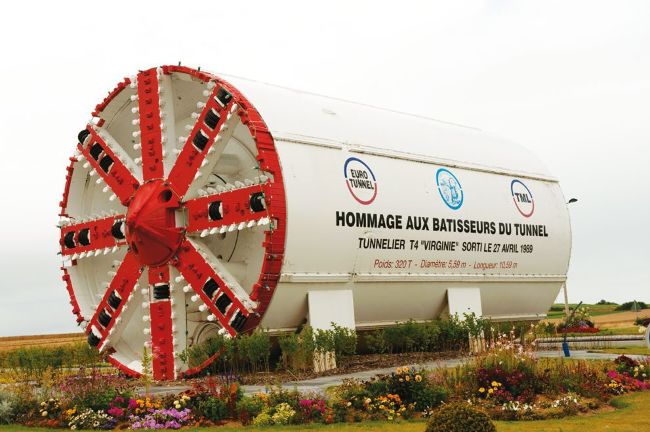DIGGING THE CHANNEL TUNNEL
How one of the world’s longest undersea passages came to be
WORDS SCOTT DUTFIELD

One of the French TBMs used to dig the Channel Tunnel
In 1988, engineers took the first swing at a face of rock that would one day be carved into the opening of one of the longest rail tunnels in the world. The Channel Tunnel, also referred to as the Chunnel, is a 31.35-mile-long tunnel that runs from Folkestone in Kent, England, and ends in Pas-de-Calais, France. However, unlike many other rail tunnels, 24 miles of the tunnel is buried beneath the water of the English Channel. The construction was completed by companies from both England and France in a collaboration called the Anglo-French consortium Transmanche Link (TML). It took six years to construct the three parallel tunnels that form the Channel Tunnel – two larger rail tunnels and a smaller service tunnel for ventilation and maintenance access.